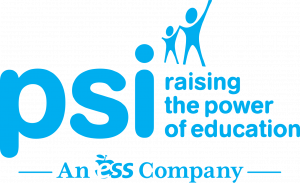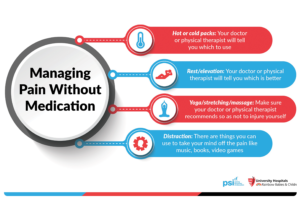Written by Dr. Carly Wilbur, UH Pediatrician and psi Medical Director.
Diabetes in school-aged children is not an uncommon finding. It is estimated that over 200,000 Americans under the age of 20 carry this diagnosis. In healthy individuals, the pancreas automatically produces insulin in response to the ingestion of carbohydrates (also known as sugars) in the diet. In diabetics, the pancreas fails to meet this demand, so these patients must not only limit their sugar intake but also use injectable insulin to help the body metabolize dietary carbohydrates.
Ideally, carbohydrates in food provide an energy source for cell function. However, if the sugars in the diet don’t get properly metabolized, these molecules build up in the blood causing hyperglycemia, or high blood sugar. Clinical symptoms of hyperglycemia include headaches, blurry vision, frequent urination, excessive thirst, or even coma. Chronically high blood glucose levels can cause irreversible damage to the nervous system, eyes, heart, and kidneys.
In order to dose the correct amount of insulin, diabetic patients must first prick a finger and extract some blood, and test that blood on a glucose monitor. Most diabetes patients have a baseline amount of long-acting insulin that they use every morning and night, and they adjust the daytime short-acting doses on a sliding scale in direct response to blood glucose readings. Insulin is then delivered using a syringe and injecting into the fatty layer just under the skin.
Diabetes requires vigilant tracking of diet, blood glucose levels, and insulin delivery. It also demands awareness of subtle cues that signal the onset of an episode of poor glucose control. These expectations may be unrealistic in younger children, and so the burden of responsibility falls on the staff and administrators at school to help keep diabetic children safe throughout the school day. But there is no one-size-fits-all approach to a diabetic’s care, and individualized disease management can be confusing. In addition, while technological advancements have created more enhanced supervision possible, the constantly-changing landscape of available devices, and the platforms on which they function, have added extra layers of complexity to the management of school-aged children with diabetes.
To avoid multiple finger pricks and needle sticks throughout the day, devices like a Continuous Glucose Monitor (CGM) and an Insulin Pump can be helpful. Instead of spot-checking blood glucose levels before and after meals, a CGM uses a sensor that is attached to the body to monitor and track blood glucose levels every few minutes, around the clock, allowing for more comprehensive overview of the patient’s glycemic control. Using a wireless hand-held device, the patient can enter the glucose reading obtained from the CGM into the bolus calculator of an Insulin Pump and the device automatically computes and dispenses the necessary insulin dose. Used together, a Continuous Glucose Monitor and Insulin Infusion Pump take a lot of the guesswork out of diabetes management. Some pump devices can even receive wireless transmission directly from a CGM, saving the user the step of entering the blood glucose level. However, nothing is error-free, and the patient and those adults in the school building tasked with their safety must be prepared to recognize the symptoms of hyperglycemia or hypoglycemia and manage these swiftly and effectively.
Because carbohydrates are the body’s main energy source, symptoms of low blood sugar (or hypoglycemia) include shakiness, dizziness, poor concentration, sweating, irritability, rapid heart rate, and irritated mood. With younger patients, or new-onset diabetics, their familiarity with these symptoms may be less than optimal, and indicators may be ignored or go unrecognized. Someone inexperienced with caring for diabetics may too easily dismiss a diabetic teenager’s low energy or bad mood as age-appropriate, and dangerously abnormal blood glucose levels could go unchecked, causing immediate and lasting damage.
Diabetes care plans can be very confusing. By nature, they must be detailed and inclusive, planning for every possibility, from hypoglycemia to hyperglycemia, in addition to all the incremental responses to normal glucose levels. Diabetics have to watch their diet and avoid excessive carbohydrate intake. This is difficult in 3rd grade when every child’s birthday comes with cupcakes for the class. This is still difficult in 7th grade when kids swap lunch items. This is even difficult in 12th grade when the vending machine is a constant temptation.
Diabetic Ketoacidosis (DKA) is a serious complication that can land a diabetic in the hospital, and likely in the Intensive Care Unit (ICU). Typically patients in DKA will have a blood sugar >300 and will show signs of metabolic distress (high levels of ketones in the urine). While there are predictive factors, like smoking, stress, young age, drug use, and infectious illness, sometimes we don’t know what triggers a patient’s DKA episode. Complications of DKA include kidney or brain damage, shock, and even death. What might be a mild stomach flu in an otherwise-healthy student can be very dangerous in a diabetic one. Stressing one’s system with recreational drugs or even sleep deprivation can have serious consequences for diabetic students. It’s vital that all personnel involved with overseeing diabetic patients feel comfortable with that role.
Diabetes care in the pediatric population can be a challenge. Even when all the instructions are followed, a young patient’s hypoglycemic unawareness or an older patient’s all-nighter for a school project can alter the way their body’s metabolism functions. Experience helps practitioners gain some comfort level with treating diabetes in children and adolescents, and along with newer technology that offers hands-free digital communication, perhaps the future holds some hope for a safer environment for diabetic kids.




